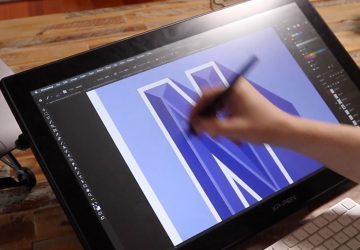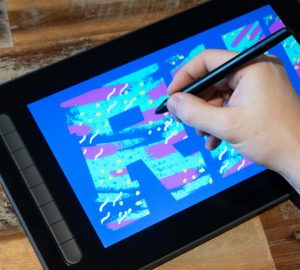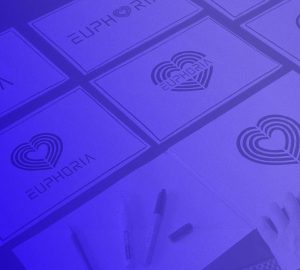There has never been a better time to learn graphic design. Never before have we had the technology to bring our imagination to life and empower us. Never before have we had such amazing and accessible resources at our fingertips. Today, more and more students are seeking to self teach and reject the traditional method of learning graphic design.
Now, learning graphic design is no simple task if you want to do it well and be successful. As empowering and accessible as self teaching is, unfortunately it lacks one of the crucial benefits to traditional education, which I think is sometimes overlooked and is a factor which I have seen emerge and become more problematic. And that is… guidance.
For those looking to self teach it can be difficult for several reasons, but the most common will be knowing which direction to take.
In this article, I will be answering a question from Hamza, who asks:

“What is the best method to learn graphic design?”
In this article, I am going to suggest an itinerary list and a pathway you can navigate to learn graphic design. You may already be familiar with some of it, but if not then I hope this is of use to you.
So, the best method to learn graphic design is:
- Understand graphic design
- Familiarise yourself with the tools and equipment
- Collect and be inspired
- Practice and build skills
- Seek education and apply your skills
- Make mistakes and learn from them
Now, if you’re an aspiring designer, I recommend you follow these steps in order as each step will put you in good stead to move onto the next.
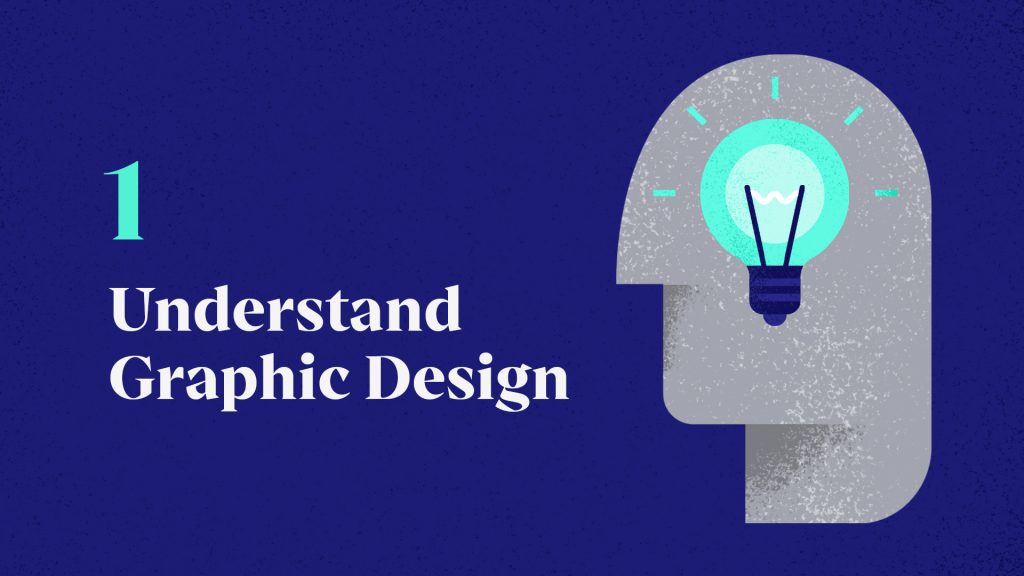
1 – Understand Graphic Design
So, before you put pen to paper and start to let your creativity run wild, I encourage you to first understand what graphic design really is and become familiar with the fundamentals.
Now this starts with understanding visual elements and design principles. Visual elements can be seen as the ingredients used to make any visual design and design principles are considered the theory of design and how you use visual elements.
Visual Elements
- Line
- Colour
- Shape
- Texture
- Space
- Form
- Typography
Design Principles
- Contrast
- Hierarchy
- Alignment
- Balance
- Proximity
- Repetition
- Simplicity
- Function
Having a good understanding of visual elements and how to use them will prepare you well in future for when you come to practise design.
There’s lots of ways you can learn about the visual elements and design principles. There are numerous tutorials, short courses and books available, and I’ve also gone into more detail for each here.
It’s also wise to understand what is graphic design and the different types of graphic design out there. These vary from print design and product design, to design marketing, logo design and branding.
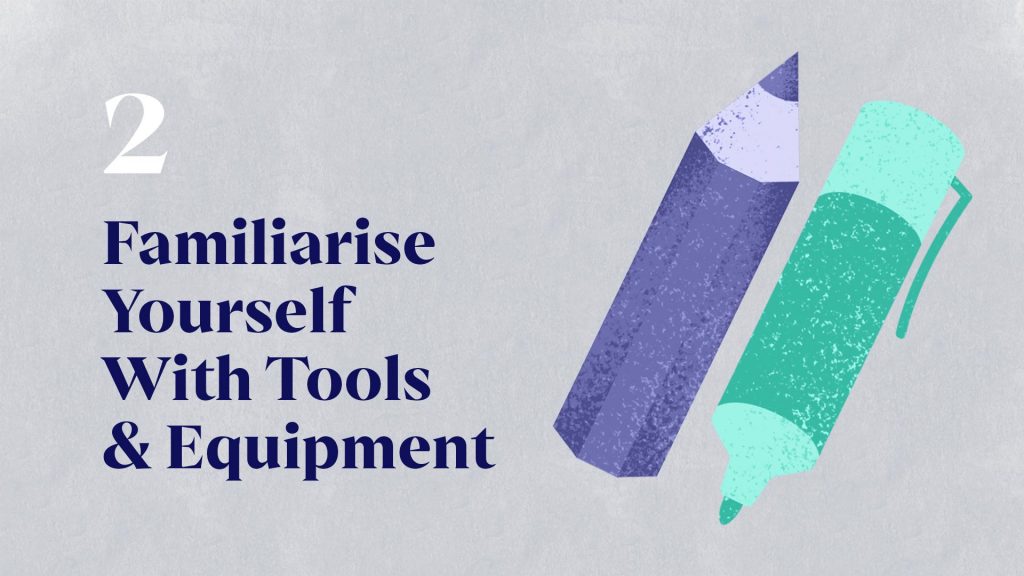
2 – Familiarise Yourself with the Tools and Equipment
Now once you understand what graphic design is and involves, I recommend you become familiar with the equipment you will need to practise graphic design.
The equipment you need will fall under two categories.
- Creative Software Tools
- Physical Tools
Any practising designer today will be utilising both to bring their design and creativity to life. Now, it’s important to note that there is quite a learning curve to using creative software tools and physical tools. So, I recommend getting up to speed on all the tools involved and when you start to practise your design, you will be better equipped to do so.
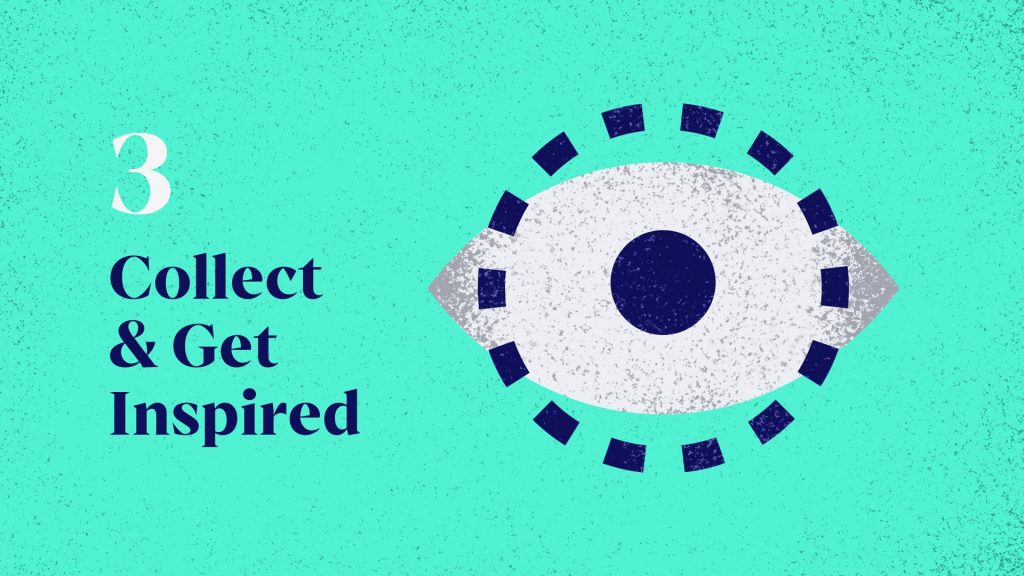
3 – Collect and Be Inspired
The next step on your path to becoming a graphic designer is to start collecting and being inspired. To begin, you can build yourself a digital and / or print scrapbook.
If you find a piece of design you like, a cool piece of typography, a leaflet, a flyer, a poster, anything that inspires you, try and get hold of it and keep it in a folder.
If you find an interesting image online, save it on your computer in a dedicated scrapbook folder. I have loads of saved material I’ve gathered over the years for inspiration. Creating boards on Pinterest is another good option for scrapbooking digitally.
If you can’t take the design example away with you, take a photo. Use your smartphone to document your findings. I always take pictures of cool and interesting things I like when I’m out and about, which I can come back to later.
The idea here is to collect what inspires you or what you think works well. The aim is to learn from what others have done before you. This will help feed your subconscious and fuel your imagination.
Now, you will not only see cool things, but you will also think cool things. Keep a sketch pad on you at all times! If you can’t carry a sketchpad, use the notes app on your phone. Great ideas can hit you anytime. Be ready to capture these, you never know where a quick idea may lead. By writing down all your thoughts, you’re able to clear your mind to think of other ideas.
Another good hobby for a designer is to collect creative books. Now I recommended there aren’t just books about design. Expand your collecting and also try books on photography, science, technology, illustration, fine art, web design, typography, and so on.
The idea here is creative variety. Try and build your own creative collection and surround yourself with it. It can all be a great source of inspiration to get your creative juices flowing and improve your design theory and technical knowledge.
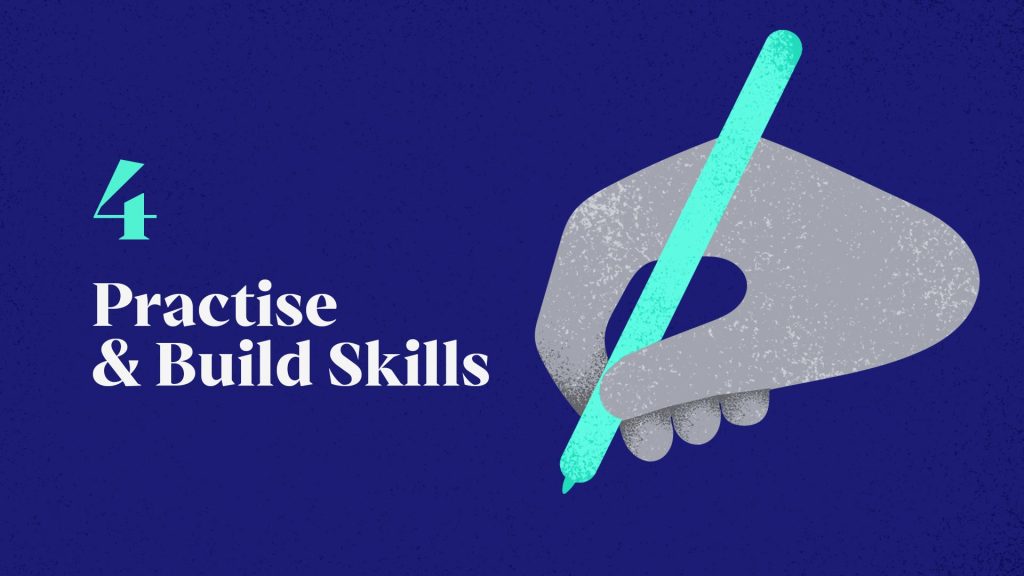
4 – Practise and Build Skills
So at this point you should really be getting into it and ready to start having a go and practising, with the aim to building and developing skills. For this, I recommend you practise your drawing, your design and your software skills. Now drawing is the fundamental skill in any creative career.
Drawing is the basic skill of expression and communication. Drawing is the essence of design. If you can bring your thoughts and ideas from your mind and project them onto paper, you can start to practise the design process.
Now, remember not to be too hard on yourself here. You don’t have to be amazingly skilled at drawing, unless you want to become a professional illustrator.
Just be sure to work on your drafting skills so you can become good at sketching your ideas out on paper. Drawing is something you can be practising all the time. I have been practising graphic design for over 10 years now and I still try and draw as much as I can.
Once you’re consciously learning from creativity you’re observing, you’re reading creative books, you’re collecting things you like, you’re seeking inspiration and you’re practising your drawing, it’s time to put what you have learnt into practise and have a go at a small design exercise.
Now if you’re a complete beginner to design, I recommend you start with a very simple and fun exercise to get you started.
For example, pick a local business in your area or one you follow on social media , or even make one up.
- Design or redesign a logo for that business.
- Define some colours, a choice of typefaces and create a theme; a brand to go with your logo.
- Using the new logo and branding, design a poster to promote the business.
- Take the poster design and think of how it could work digitally, as a website or perhaps in social media posts or banners.
Often in graphic design there is the challenge to create design for both print and digital media.
Now whatever your brief, before you even think about using a computer, firstly do your research, seek your inspiration and sketch your ideas out on paper.
Do not focus on one idea at the start. Sketch as many various compositions as you can of the same idea and only move onto the computer once you have at least 3 or 4 options of an idea. Now, you may hear some experienced designers saying to only focus on one idea. Whilst this may work for them, remember that you’re still learning! You want to explore your ideas and see what works. This is why I recommend at least 3 or 4 options.
Next, I recommend you practise your software skills.
Once you have sketched out your design and you know roughly what you want to do, you can start to practise using software tools to bring your design to life.
Today you have a range of creative software tools on offer, from Adobe Creative Cloud to Affinity Designer and CorelDRAW Graphics Suite. Learning these software tools can take a while, so take your time and enjoy it. Stick with it and soon you’ll get the hang of it.
What should result from this process is a fictional project and something to show for your time and work. This is work you can put in your design portfolio to show to potential clients! Now whether good or bad, it will be something to reflect on and build upon in future.
This is something you can do again and again, to keep practising and developing skills. The more you do, the more work you will have to show for it.

5 – Seek Education and Apply Your Skills
The next thing I would advise you to do is to level up your skills and start to seek education. As I said earlier, there has never been a better time to learn graphic design. If you want to pursue a career in graphic design, there isn’t a lot to stop you.
Currently, the three main options to choose from are:
- Self teaching
- Enrolling in online courses
- Taking the traditional route and studying at university
Now there is no best option to learn graphic design here, only the best option for you.
Each one of these options comes with big pros and cons.
Self Teaching
Pros
- It’s the cheapest option
- There are more resources pouring onto the web every day
- More companies are offering free livestreams
- You can choose to learn how you learn best, such as videos, books, hands on
- There are so many amazing books available to learn from
Cons
- It requires commitment and your own determination and motivation to see it through
- One can feel misguided on which direction to take
- It can be hard to get feedback and criticism by your peers.
- It can be hard to build a body of work
- Lack of goals and set time
- Can be lonely doing it by yourself as opposed to in a course with others
Online Courses
Pros
- There are a variety of courses available so you can specialise in an area of interest, such as logo design, typography or even using creative software.
- Cheaper than university
- Can learn while you work and continue throughout your career
- More guidance, direction, focus and aim than self teaching
- Can be taught by working professionals who have practical experience
Cons
- Have to find the right courses to learn graphic design – there aren’t many all-in-one “graphic design” courses, but rather individual courses on different topics, e.g. logo design, typography or even using creative software.
- Less guidance than university teaching
- You usually aren’t technically “qualified” on completion
- More difficult to get feedback, criticism and advice from tutors and peers than university level
- Price can add up by doing lots of individual courses
- There are free courses showing the same content and more
Traditional Education Routes
Pros
- You are provided with challenging briefs which are met with feedback and criticism
- One-to-one time with tutors for feedback and advice
- Criticism by your peers
- Finish with a body of work
- Part of a class and group of people
- Get to experience other people’s successes and failures to learn and grow
Cons
- Expensive
- Takes a few years to get your qualification
Whatever path you choose here, the aim is to build and improve on your skills. Seeking education will help you level up your skills and better prepare you for a career in design.
The main goal of education is to build a body of work you can then use to put yourself out there and get professional work. If you can gain a qualification too then this will certainly look great on your CV, but what should really shine for potential employers is your portfolio.
Now it may seem that education is the end of the road, but far from it! In fact, it can be just the beginning. With any qualifications and experience in hand, it is then time to put yourself out into the world and start forging a career.
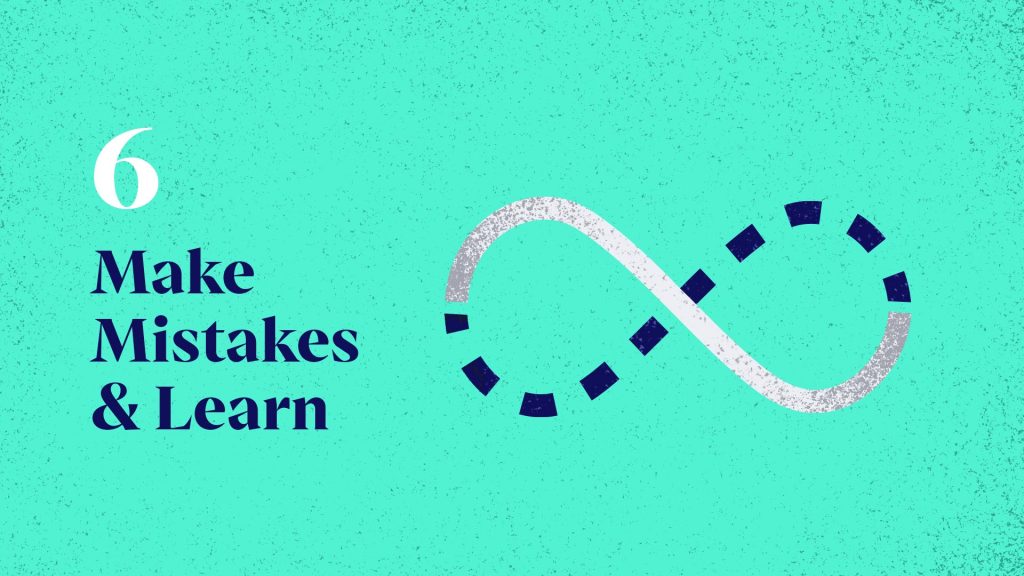
6 – Make Mistakes and Learn From Them
Ultimately, whatever you do and whichever path you take, it’s all about the journey and your development. Even after completing all of those steps I just mentioned, one will never stop learning.
One big part of development is discovery, testing what you have learned and pushing yourself further. Another big part is making mistakes. I have been a designer now for almost 15 years and I still make mistakes. And that’s a good thing! If you make mistakes then it shows you are trying.
The problem isn’t making mistakes, the problem is not learning from your mistakes. The more mistakes you make, the more you will learn and improve in future.
I look back on the work I did years ago and I wonder, what the hell was I doing? But, in reality, I was in a different place back then. I have now done so much and learnt a lot that I am now better equipped to build upon my earlier work.
In the future, I’m sure I’ll make more mistakes, but I know because I have a good attitude, I’ll learn from them and improve further in future. So don’t be afraid to make mistakes!
To Conclude
So, to answer the original question, I’d say the best method to learn graphic design really depends on your circumstances and what is best for you. There is no right or wrong way, just the way that works for you. Whichever way you choose to learn graphic design, I’d recommend you take note of what I’ve said in this article to gain the best understanding. Aim to understand graphic design and to practise. Only with understanding and practise can you bring your creative ideas to life.
So what are your thoughts? Do you agree with my answer? What method works best for you? Is there any other method you’d suggest to learn graphic design?
Please share your thoughts in the comment section and if any of you have any other questions regarding design be sure to pop them in the comments or email me at creative@garethdavidstudio.com and I’ll look to get back to you with a thorough answer.



